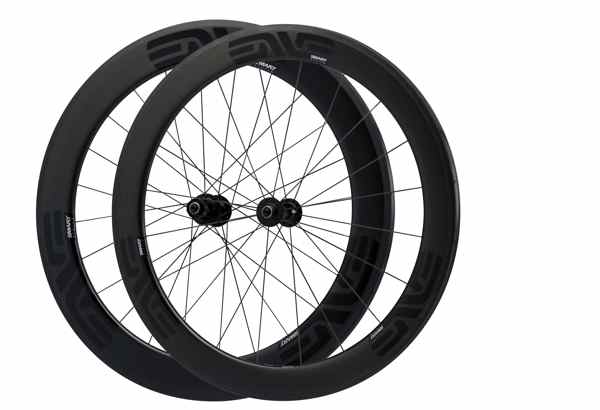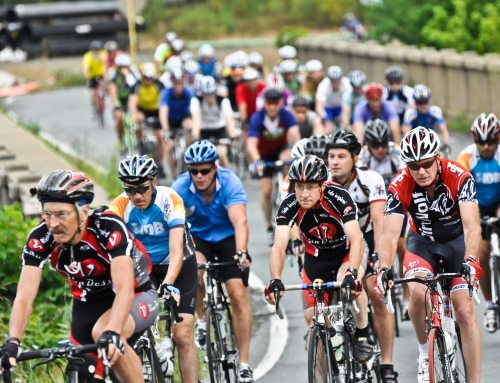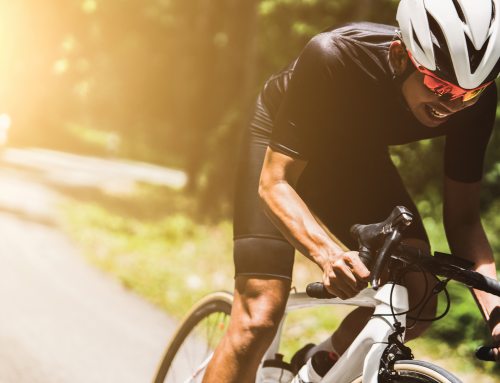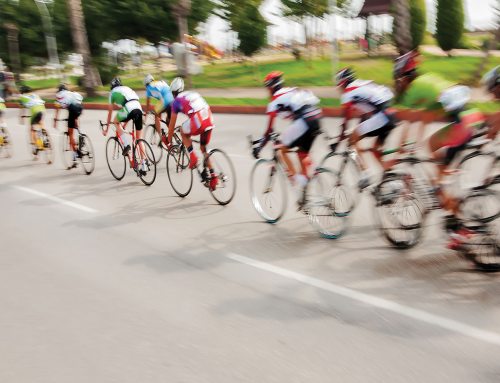
By Victor Jimenez
It was a windy day for a triathlon. The winds were blowing at a steady 15 to 20 mph with gusts even higher. A portion of the course was crossing the river on a narrow causeway and bridge. This is where I saw many pale-faced riders getting blown all over the road, and even a few crashes.
Many of those crashes, and the stress that those riders had from the cross winds, were unnecessary and avoidable. One of the reasons they were having such a hard time in the cross winds is that they were using deep section aerodynamic wheels. Aerodynamic wheels help you slice through the wind with less effort and can help you have faster bike split times. Unfortunately, these deep section wheels can also be more difficult to handle in cross winds. In this article I am going to help you make a better selection on your aero wheels so that you can minimize problems with cross winds and maximize the aerodynamic benefit.
Why are aerodynamic wheels important?
Most of the energy you produce on a bike – up to 90% of it – is spent overcoming aerodynamic drag, and most of that is from your body. In fact, your body accounts for as much as 80% of your total aerodynamic drag. So it only makes sense to first optimize your body position. When you have been professionally fitted, and are in the most comfortable and aerodynamic position you can attain, only then does it make sense to look at other areas to fine-tune your aerodynamics. Wheels are a good place to start.
Even though your wheels account for only 6% to 8% of your total aerodynamic drag, an appropriate set of aerodynamic wheels can significantly improve your time, especially if your races are long. Here are some tips that will help you select an appropriate set of aerodynamic wheels.
Get the deepest wheels you can handle.
Disk wheels are nearly always faster than other wheels, but they are also the most difficult to handle in cross winds and they don’t absorb road shock very well. Generally, the deeper the rim, the better aero advantage – although if you are swerving all over the road because of cross winds you will probably go much slower than you would if you had a narrower depth rim.
Consider this example:
A friend who is an incredibly talented bike handler and an elite time trialist tested both a 65mm deep rim and an 80mm deep rim. Though highly skilled, she had trouble effectively controlling the deeper rims in windy conditions. In her case she will be faster with the more shallow 65mm rim.
Your body weight is a factor.
The heavier you are, the easier it is going to be for you to handle deeper section rims. Riders who weigh less than 130 pounds should stay with rims no deeper than 45 mm+-. Those super-deep rims that you see are best suited for larger riders who are highly skilled at handling their bikes. An average, middle-of-the-pack, age-group triathlete who weighs 160 pounds could easily handle a 65mm rim. If he or she were highly skilled he or she could even handle a disk with an 80mm rim on the front.
Is there really a difference between brands?
The top aero wheel brands spend a lot of time working on rim shapes and surface profiles. By tuning the rim shapes they are able to make a wheel that is less affected by cross winds. Usually, this allows a rider to use a deeper section rim for greater benefit.
Most brands claim that their wheels are the fastest or most aerodynamic. In reality, the difference in performance between the major brands is negligible. Aerodynamics is a very complex science and much of the wind-tunnel data that the manufacturers provide may not be realistic, as those tests are done in a controlled environment. Also, aerodynamics is very specific to you and your bike. That is, a set of wheels may test out faster for me yet slower for you.
What about the budget aero wheels?
There are some very reasonably priced aero wheels on the market. Generally, they keep the cost down by using lower quality hubs, and less goes into the design of the rim profile. They will provide some aerodynamic benefit but not as much as the top wheel brands.
In summary: Aerodynamic wheels are an important part of lowering your bike split times. The use of wheels should come only after you have optimized your position on the bike, because your body accounts for most of the aerodynamic drag. When shopping for wheels, look for the deepest wheels you can handle, as they will provide the most benefit. The brand is not too important, but the top aero wheel brands have advanced designs that will make the wheels handle better in cross winds, which will make you faster in the end. The budget wheels are a good place to start if you don’t want to spring for one of the top brands. Whichever you choose, make sure to put some thought into your selection so you don’t end up getting blown all over the road in your next triathlon.
# # #
Victor Jimenez is the owner and professional bicycle fitter at www.bicyclelab.com. Bicycle Lab is a small boutique studio that specializes in bicycle fitting, custom bicycles and education. Victor teaches clinics and classes to individuals, coaches and teams on bicycle fit and the technical aspects of cycling, and is co-host of the www.cycling360media.com podcast. He can be reached at www.Bicyclelab.com, www.Facebook.com/bicyclelab, or victor@bicyclelab.com.






